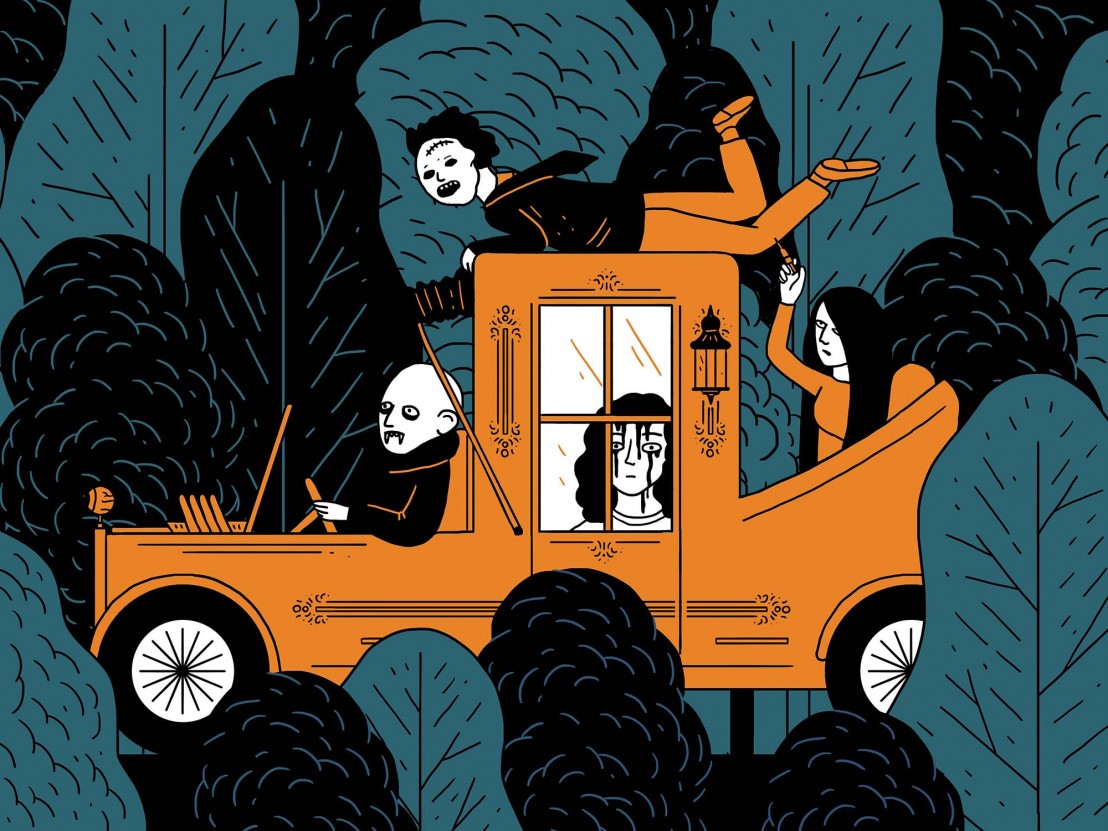
Join us on an epic round the world trip to some of the darkest reaches of horror cinema.
How does the geography of your upbringing determine the texture of your nightmares? To find out, we’re embarking on a blood-curdling, globe-trotting journey through horror cinema to better understand what keeps us all up at night. Thirty one films from 31 different countries, each with their own distinct styles, themes and sociopolitical subtexts.
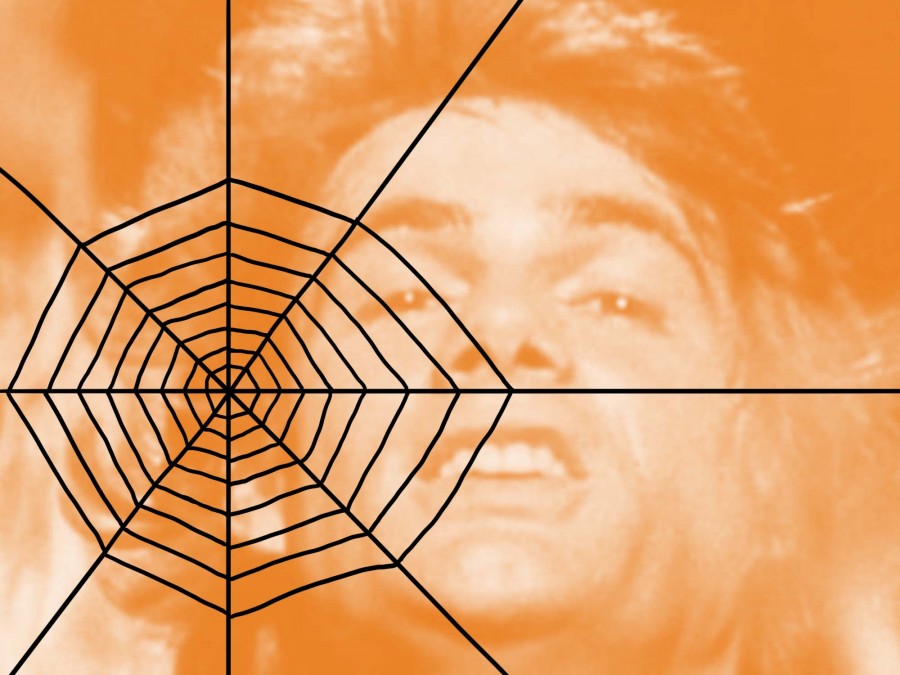
Inspired by the classical myth of the Luison, a South American wolf creature, The Nazarene and the Wolf is an unconventional werewolf tale about the cursed son of a farmer’s family. When he is nearly 18 years old, Nazareno falls deeply in love with the beautiful Griselda but he also learns that the village legends are true and as the seventh-born son he is fated to become a werewolf. Meeting with a devil surrogate called Mandiga, he is presented with a choice: give up love with Griselda and be cured, or be doomed to be a monster. One of the most successful Argentinian films of all time, The Nazarene and the Wolf has established itself as one of the more important films in the country’s history. Presented as a dream injected with South American mythology and Catholic imagery, the film draws on the lurid sensuality of the Argentinian landscape to flesh out what might otherwise be a familiar story of doomed love.
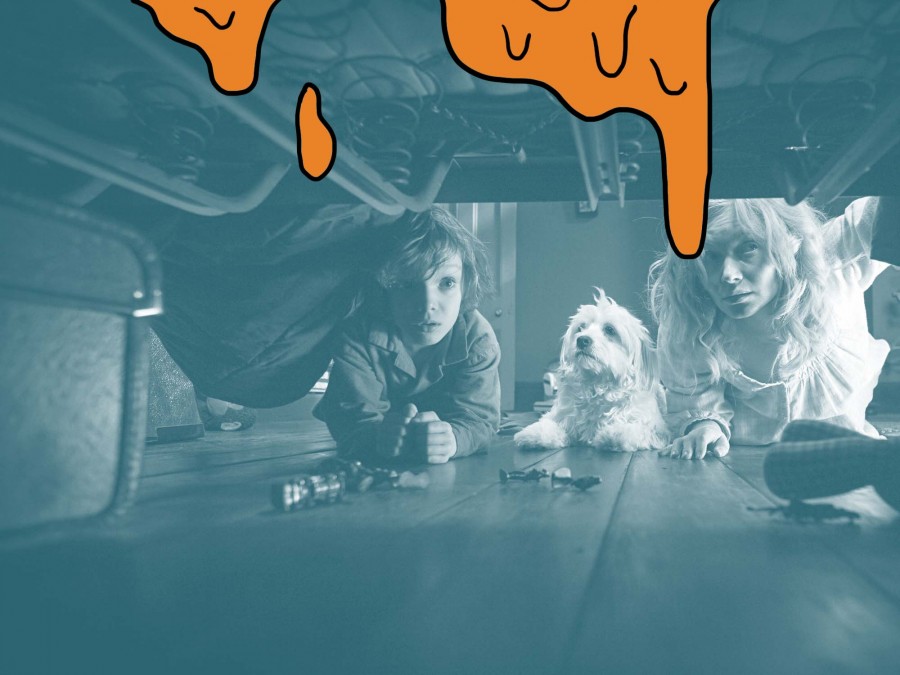
Wake in Fright may be the quintessential Australian film and some may argue that it is, in its own way, a horror film. The Babadook however, shifts perceptions and let us in on a version of the country rarely screened. Far away from the central continent, The Babadook presents a more feminine and suburban version of Australia as the narrative pins itself on an isolated single mother dealing with her difficult child alone. Battling the expectations to fill the roles of mother and provider, the widowed Amelia has not had time to grieve the death of her husband, as her mental state unravels. As she begins to fear that the monster from a mysterious book has been stalking her home, reality and nightmare begin to blend into one. A psychological mind bender that tackles the horrors of motherhood in the face of isolation and gendered expectations, The Babadook stands out as one of the best horror films of the past decade.
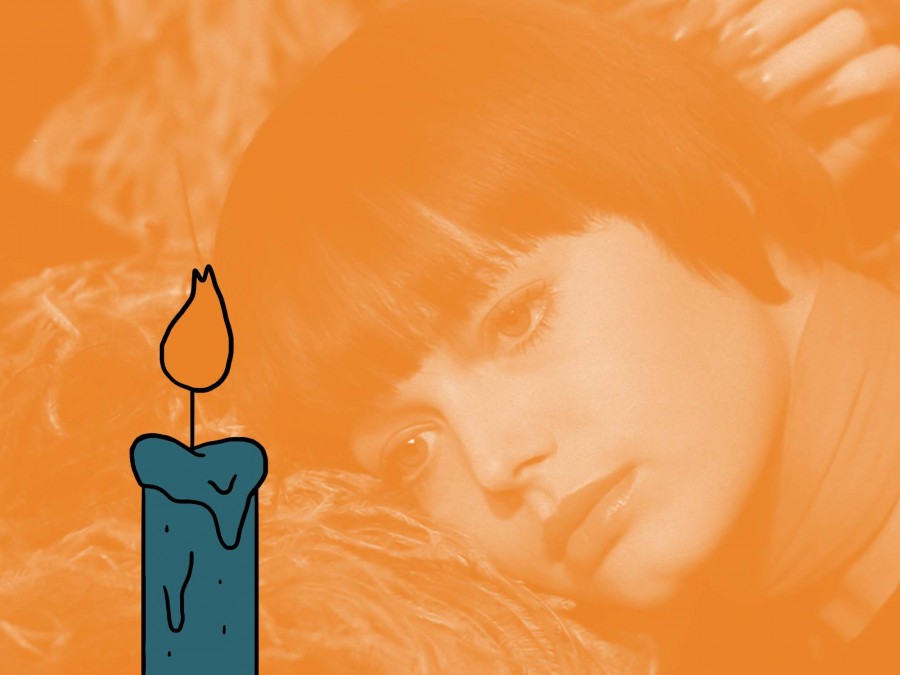
No vampire has ever been quite as elegant as Delphine Seyrig in Daughters of Darkness. A smiling bottle blonde baroness with eyes on a young couple at a vacation resort, Daughters of Darkness represents a sleek euro horror that blends French sensibilities with a Belgian flair. While drawing on international stylings from both American and French cinema, the film’s unique surrealism sets it apart from most European lesbian vampire films of the era. Shot in two of Belgium’s greatest hotels, dating back to ruthless King Leopold II, which echoes throughout the film’s centuries-long legacy of violence the film is stamped with Belgium’s colonial history of violence. And channeling a comic tone through surrealism, the film evokes one of Belgium’s greatest artists, the surreal master Rene Magritte who threatened the comfort of the mundane by questioning the surface value of objects. Seyrig’s impossibly beautiful vampire hiding below her smiling surface is humanity’s potential towards self-motivated violence and oppression.
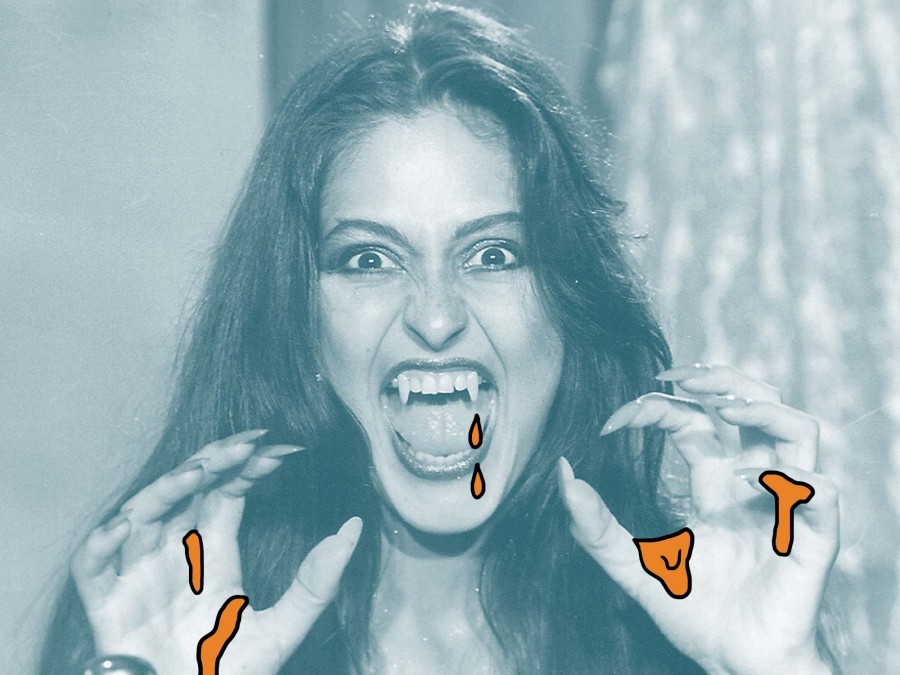
The lesser known master of Brazilian genre cinema, Ivan Cardoso, infuses the music of the Brazilian language into the rhythm of his films. After the death of her husband by a murderous plant, a dance teacher retreats from the world to a small cabin. Drawn out by some friends in order to help stage a ballet called ‘The Seven Vampires’ at a nightclub, the performance she helps orchestrate goes wrong when a very real murder takes place on stage. The bourgeois crowd, however, believes the incident to be all a part of the act and clap along as a dancer is literally eaten alive on stage. Playing with misdirection and irony, Cardoso treats sex and violence with the irreverent pleasure of a trickster demon. Playing with voyeurism and genre tropes, Cardoso uses editing and music to defy audience expectations and surprise them through twists the blend horror and comedy.

As a horror film set in suburbia, Ginger Snaps takes advantage of the shifting seasons to present Canada as politely uneventful. A werewolf narrative that serves as a metaphor for menstruation, two goth sisters are late bloomers until Ginger, the older sister, is attacked by a lycanthrope. Suddenly, her body starts to change she navigates the puberty minefield of new hair, new desires, and a new body. Canada’s literary history based on themes of survival is satirised through the all-too-comfortable life of these girls and their wickedly macabre imagination. Capturing so deftly the mundane ordinariness of Ontario suburbia, the theme of survival is reimagined as an internal rather than an external conflict. Feminized horror at its best, Ginger Snaps blends continues in Canada’s legacy of body horror established by master David Cronenberg with a new twist.
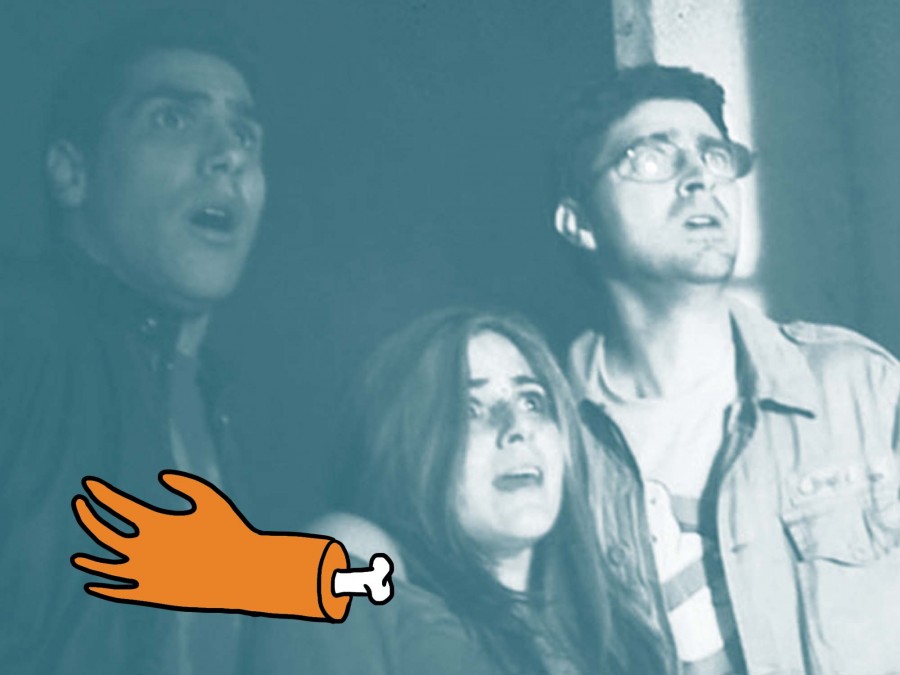
Documentary filmmakers are looking to investigate ghost sightings in an abandoned sanatorium in this found footage horror comedy from Costa Rica. The filmmakers here are arrogant, while they search for proof of ghosts with little faith in the people they speak with. Using their documentary project as an excuse to get attention from girls, they are soon faced with the possibility that there may very well be lurking in the vandalised hallways of the old hospital. With the increase in paranormal tourism, the film offers a compelling insight into a landscape that ignites the horror imagination. Similarly portraying the ulterior motives of bro-filmmakers works remarkably well as a means of working around the budgetary limits the film has been constrained by. Supporting characters, such as a psychic, similarly shed some insight into the legends and beliefs of some of more superstitious elements of Costa Rican folklore.
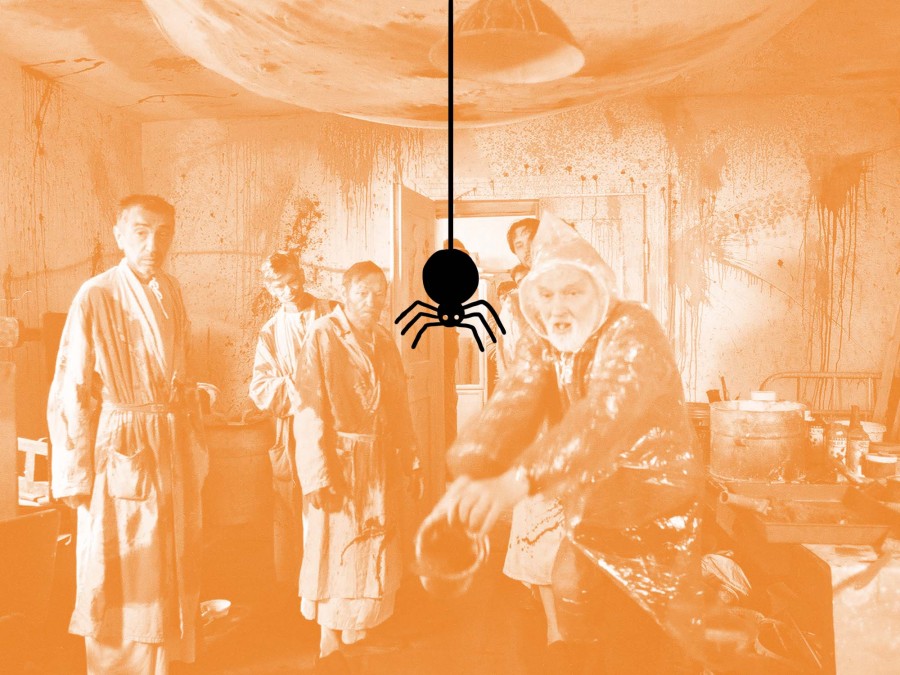
“What you are about to see is a horror film,” Jan Švankmajer says in his introduction to Lunacy. Combining live action and his stop motion, Lunacy is a tribute to the works of Edgar Allan Poe and the Marquis de Sade. With hints of both in the film’s sensual and irreverent narrative, the film takes place at an asylum where the line between keepers and inmates has long been blurred. Subversive surrealism bleeds into the film as time and space are redefined along non-linear trajectories. Horse-drawn carriages pass over highways and hint at the looming future that intermittently bleed into the film’s subconscious mind space. Frightening more for it’s treatment of rampant power abuses and the fragility of the human mind than grotesquery, Lunacy portrays a microcosm of a society in which the most debased criminals and moral offenders are deemed the caretakers of the rest of us.

This Egyptian ghost film with a giallo flavour jumps right into the action. In a high-end modernist home, a housewife settles in for the night until a strange incident lead her to run away in fear. Part Poltergeist and part The Entity, the film makes it ambiguous as to whether or not a supernatural presence is lurking in the home or if a duplicitous husband is trying to make it seem that way. So much of the film’s impact lines on the shoulders of actress Mariem Fakhr El Dine who channels skepticism that devolves into a slow building madness. In one scene, she is awoken in the middle of the night by a noise downstairs only to stumble upon her phantom doppelgänger bleeding at the neck and struggling to hold onto “life”. Is this all a dream or an elaborate fantasy? Rather than be a gothic horror, the film seems to be about more contemporary fears and makes an allusion to classic horror films like Psycho to create a post-modern atmosphere.
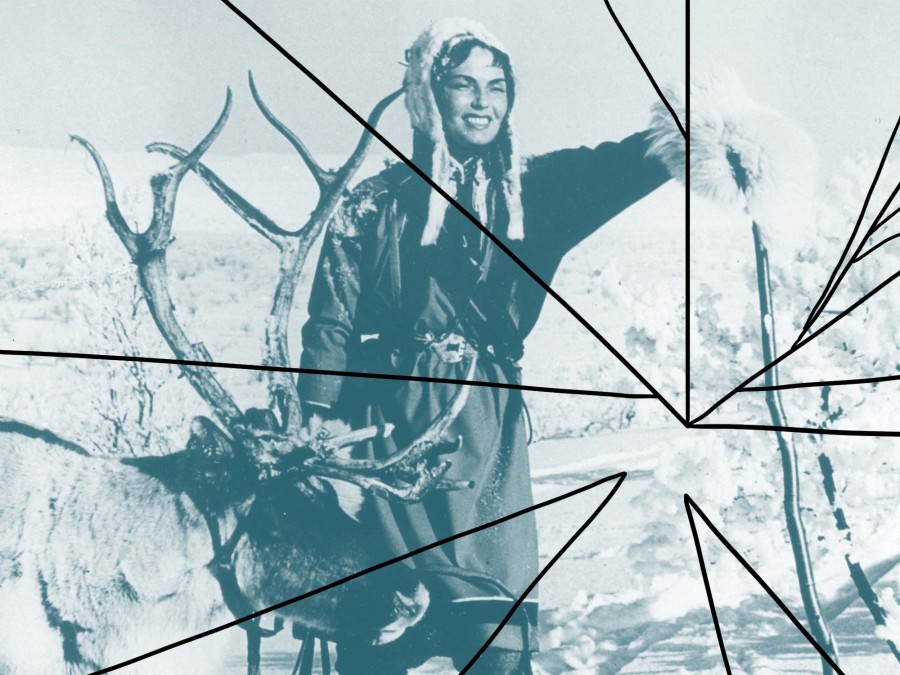
The stark black and white cinematography of The White Reindeer is only amplified by the incredibly white snow that dominates much of the film. Blinding and oppressive, the snow conceals a difficult life where life follows the herds of reindeer that provide the snow dwellers with what they need to survive. Amid this difficult landscape, a beautiful woman falls in love and gets married, only to be separated from her husband for long periods of time as he goes off to work with the reindeer. Frustrated and lonely, she visits a shaman who offers her a love potion that goes horribly wrong. Inspired by Finnish folklore, the film gradually devolves into a phantasmagorical experience where the natural world is as deceptive as the human spirit. Driven by animalistic passions that override survivalist impulses, the recurring apparition of a legendary white reindeer drives a dividing line between the real and the dream world.
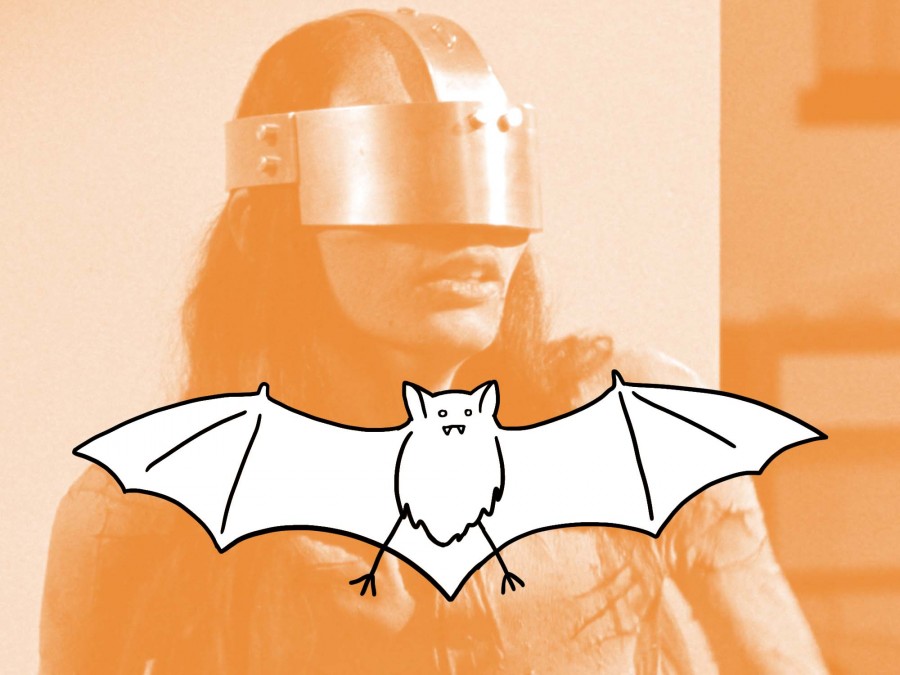
In a horror narrative that could almost only be born from the tensions between religion and class burrowed in France’s cultural identity, Martyrs challenges the limits of the human body and spirit. Not for the faint of heart, it represents a more mainstream side of the French extremist horror movement of the 2000s, which focuses on transgressive motifs. Martyrs opens up with the escape of a young girl from an out of use slaughterhouse where she has been tortured and pushed to her physical limits for an extended period of time. Years later, with the help of a friend, she seeks revenge by the people who imprisoned her as a child only to be recaptured. Focused on class and gender abuses, the film roots the torture of its subject in a quest for evidence of life after death. Old school Catholic morality dictate the film’s trajectory and inspire the callous cruelty of its upper crust villains.
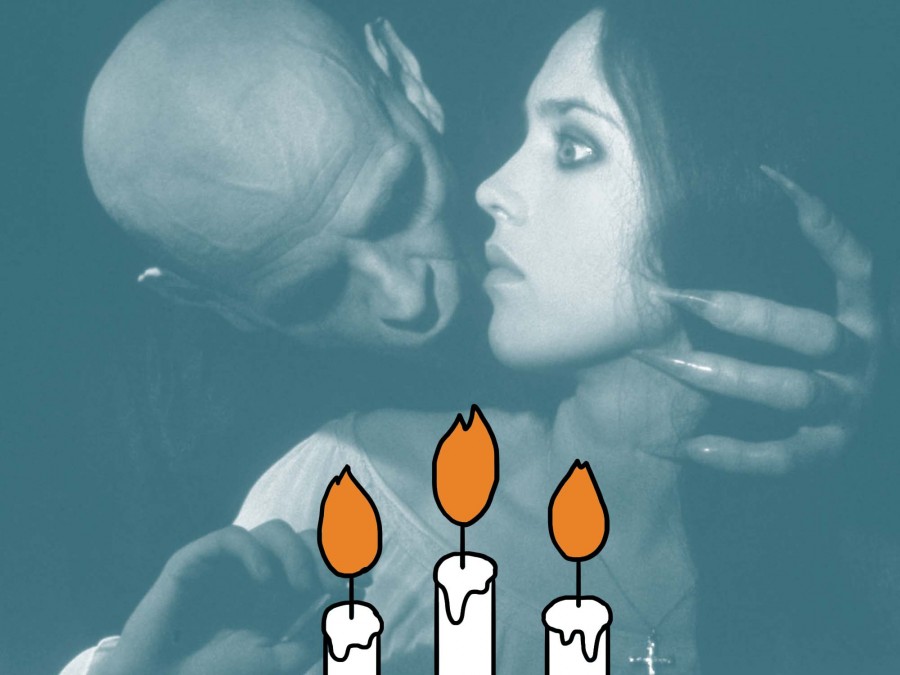
Rather than be a remake, Werner Herzog intended Nosferatu the Vampyre to be in dialogue with FW Murnau’s 1922 masterpiece. Connecting the height of the German cinema to the New Wave of German cinema, he reinterpreted the classical vampire narrative for a new age. While bearing many similarities to its silent counterpart, Herzog’s film is rooted more deeply in both empathy and reality. Emphasising vampirism as disease, along with Nosferatu arrives millions of rats which descend upon the German countryside and bring the plague along with them. Rather than be a scourge, Klaus Kinski’s interpretation of the pallid vampire has been imbued with deep sensitivity and longing. Herzog, who has long been fascinated with the sublime in nature, here maps it onto a supernatural being who represents the contradictions of humanity’s fragility and durability in the face of our own mortality.
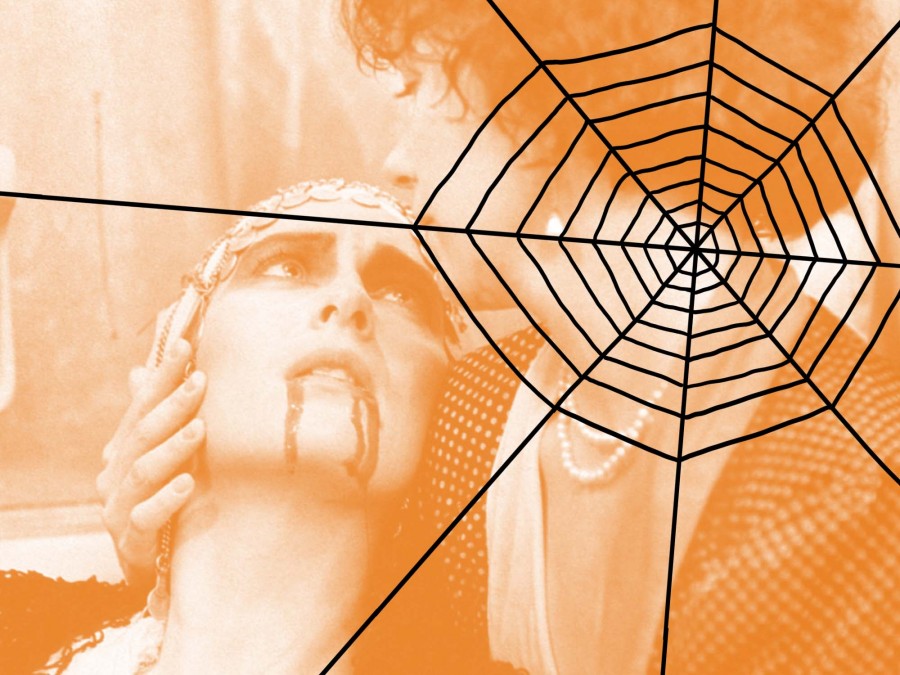
Perverted and macabre, Singapore Sling blends elements of horror and film noir. Shot in black and white with evocations of Otto Preminger and Josef von Sternberg, the film is about an unhinged and incestuous mother and a daughter team who take in a bleeding and subdued detective who arrives at their doorstep. What ensues are a series of grotesque and hilarious power games involving BDSM, sex, and violence. Rather than build up suspense through increments, the film embraces maximalism and excess. Each shot takes full advantage of the foreground and background, while the performances are delirious physical. Not for the faint of heart or the prudish, Singapore Sling portrays two beautiful and liberated women bending morality to such extremes that they barely even seem human anymore. Blending elements from Greek tragedy and comedy, director Nikos Nikolaidis disturbs the perception of the ancients as the pinnacle of high art by drawing out from them their most absurdist and horrific motifs.
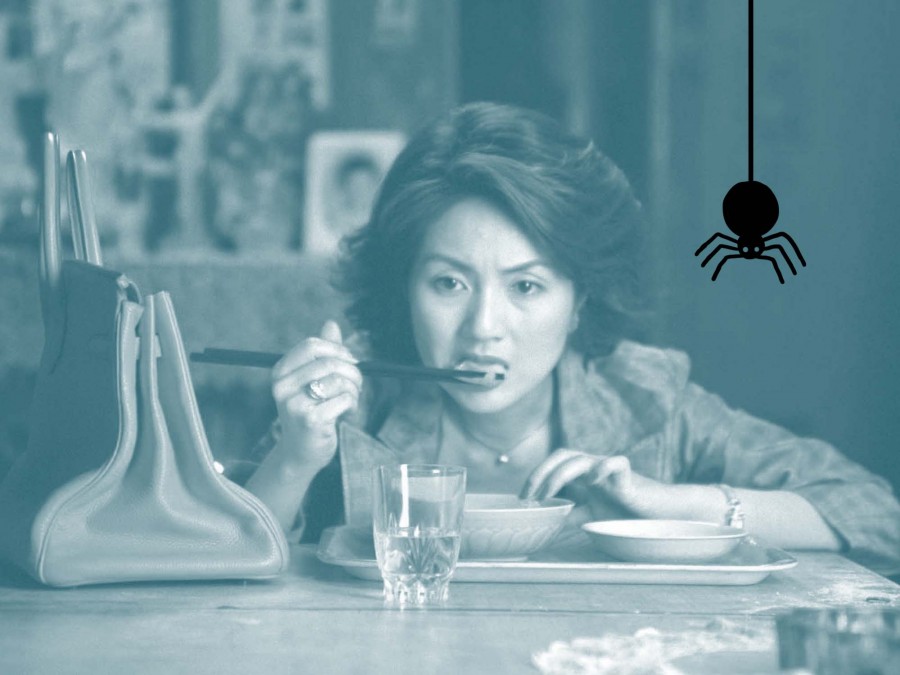
Brightly saturated colour dominates Fruit Chan’s Dumplings, about the miracle cure that keeps women looking and feeling young. Dizzying and darkly funny, Dumplings presents a distinctly feminine take on horror focused on the tribulations of ageing and the perception of women as caregivers. Set along the border of Hong Kong and China, the film follows an actress who wants to look young again in order to recapture the attention of her wealthy husband. She visits Aunt Mei, who prepares her special dumplings filled with aborted human fetuses. Among the film’s locations is Lai Tak Tsuen, a public housing development that’s presence bookends the film’s central action. Serving as a representation of class divisions, it’s unusual bicylindrical design serves not only as vaginal imagery but emphasises the film’s atmosphere of oppression.
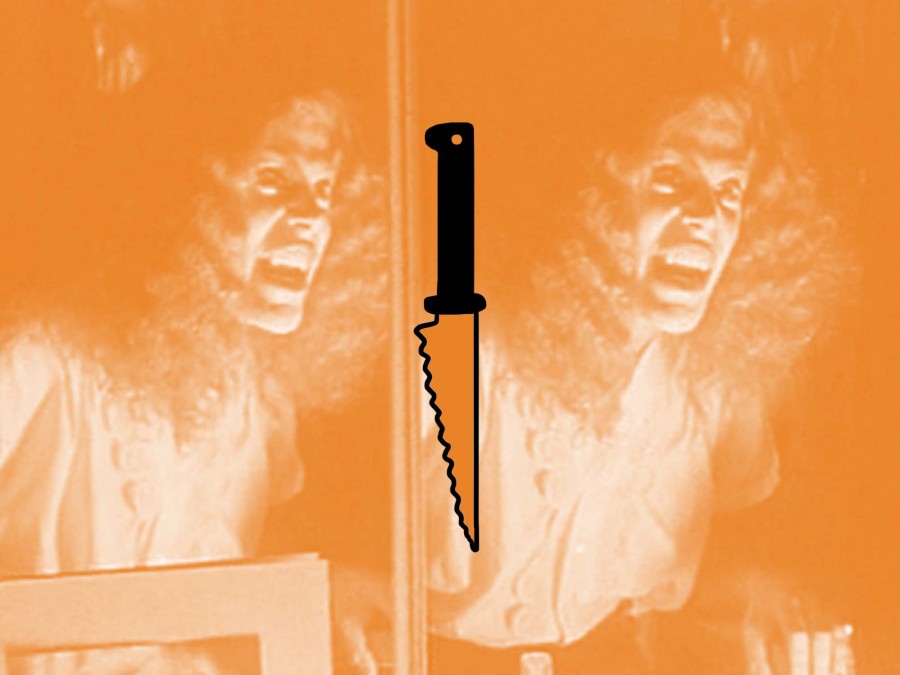
As much a comedy as it is a slasher film, Draugasaga is set at a television studio haunted by a red-headed American women. With many stylistic flourishes that seem inspired by B-movie horror films from the 1970s, the film overcomes budgetary limitations with comedy and idiosyncratic directorial flourishes. A young man is employed at a tv studio as a night watchmen and spend his nights playing with a female coworker but soon the line between reality and fantasy begin to blur. Set in the reality of a television studio lends some practical advantages, but similarly, helps emphasise the dangers of losing yourself to cinematic fantasies. While most of the film takes places indoors, a beautiful scene in a warm cafe by the harbour only helps to further serve the film’s insular environment where imagination can thrive.
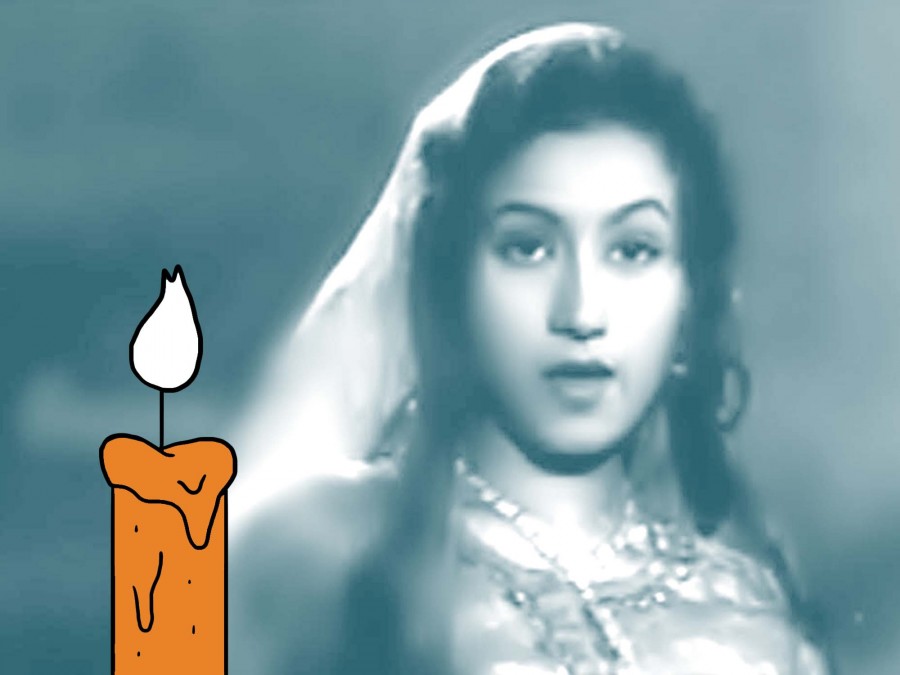
The wind blows through the titular mansion as a narrator explains the ill-fated affair of two lovers without names. Their mysterious fate captures the attention of the mansion’s new owner, who finds himself enthralled by a spirit whom he believes is the beautiful lover who once lived in the house. With one mystery falling over the other, The Mansion intertwines fate and coincidence, as piece by piece the story of the two lovers comes together. With strong doses of gothic romance, the almost cavernous mansion is beautifully adorned and labyrinthian. The question of the beautiful woman who, like a spectre, appears around the house blurs the line between good and evil intentions. With evocation of previous lives, she suggests that this is not the first time they’ve met and they are the ill-fated lovers of legend. The only thing keeping them apart now is his life, that she urges him to abandon so they can once again be together.
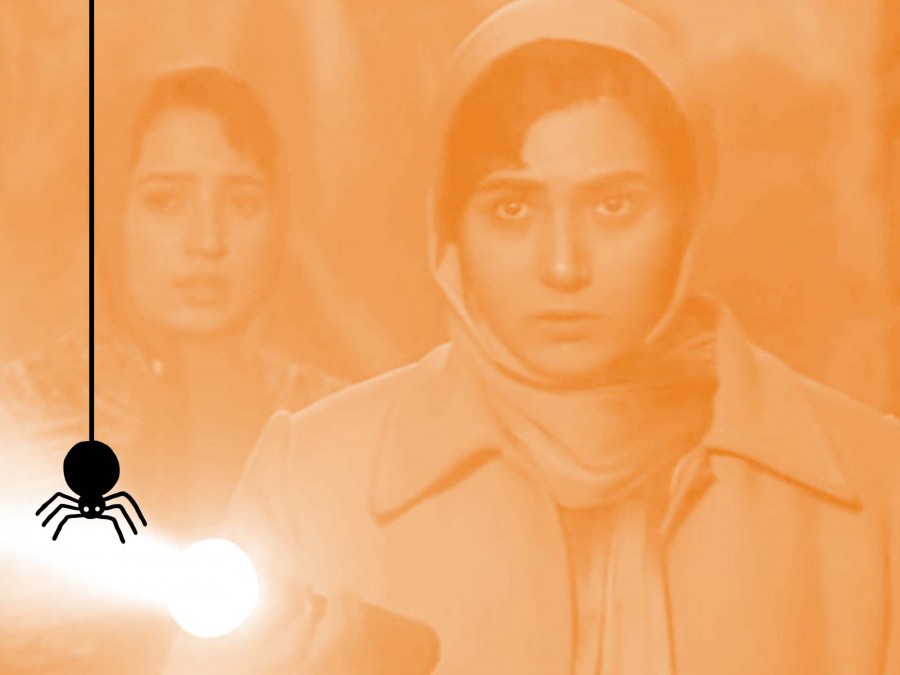
In this Iranian horror film, two young women go to a university near Tehran but their creepy accommodations leave much to the imagination. With their dormitory located in a dark and mountainous region, legends of elves and fairies living in an abandoned building inspire late night explorations through its haunted halls. Blending comedy and horror, the film uses misdirection such as unveiling the inexplicable cry of a baby piercing through the cobwebbed ruins as a cheeky ringtone rather than evidence of supernatural forces. A film about concealed temptation, the fairies are able to transform their appearance and lure young women towards corruption through trickery. Supernatural and real world evils blend into each other, as one of the girls encounters repeatedly a phantom man with brown teeth who may be a spirit or a vagrant. He begins to haunt her and even far from University it seems she cannot escape his influence.
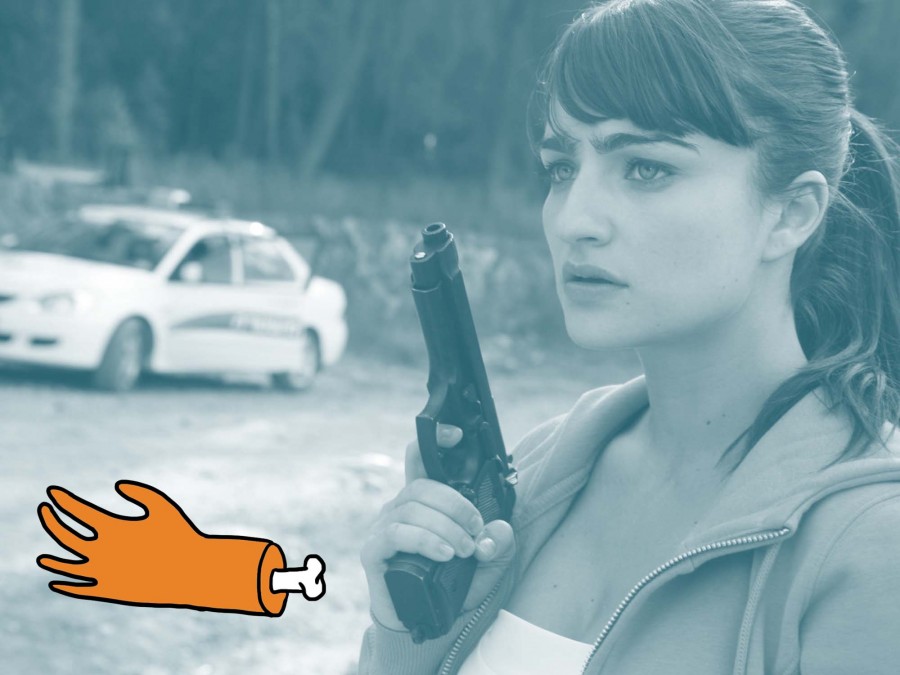
Mass hysteria has long been a favourite theme of horror filmmakers but placed onto the first Israeli slasher it feels particularly subversive. When a group of friends run into disgruntled police officers in the woods, the abuse of power spread like a disease. Set mostly in a primal forest haunted not by supernatural creatures but by bear traps and mines, society imbued with rage and hatred does the rest of the work as the tropes of the slasher genre are twisted for a darkly comic effect. Unsatisfied with the politeness that only leads to more trouble for our protagonists, Rabies turns the subtext of power abuses into the text itself as the behaviours of a rogue police officer only leads to more anger and violence. As power itself lies between good and evil, it makes the perfect villain in this tight, backwoods Israeli horror.
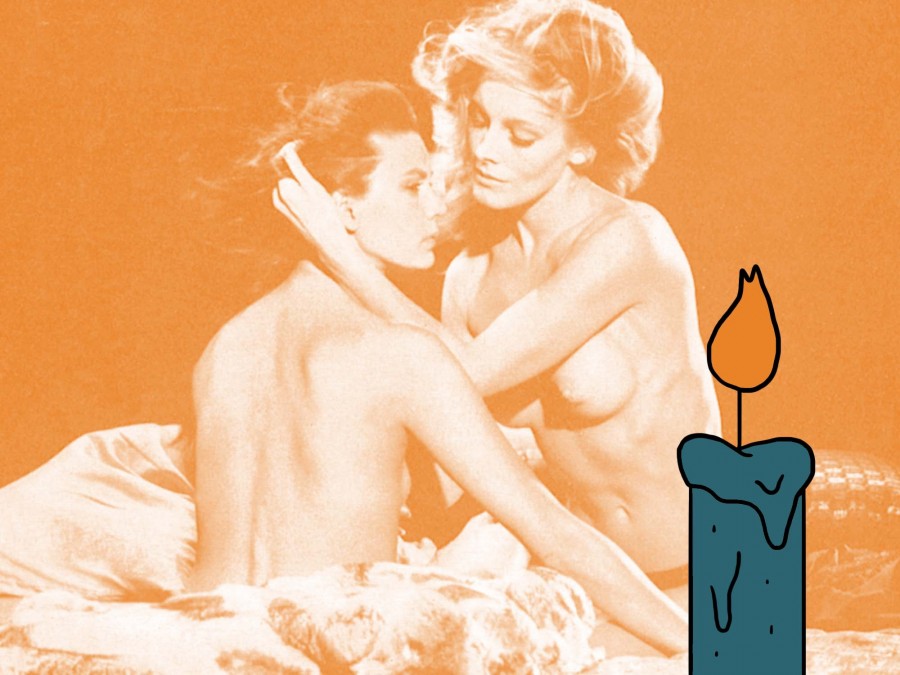
A Lizard in a Woman’s Skin synthesised beautifully the virtues of the hyper-stylised giallo movement. Blending the genres crime elements with the more poetic influences of nightmares, a beautiful woman, Carol, dreams that her neighbour had been brutally murdered only to find that police are investigating that very crime. Scared and confused, she becomes the prime suspect in a murder she only remembers from a nightmare. With a twisting narrative interrupted by hazy dreams, Carol loses more of herself as she suspects things aren’t quite as they seem. Focused on finding answers, Carol starts rebuilding and searching for characters, places and things from her nightmares in order to piece together exactly what happened that night. The film seems dipped in saturated colours and cobbled together from fashion spreads brimming with stunning women and over the top locales, a feast for the spirit and the eyes.
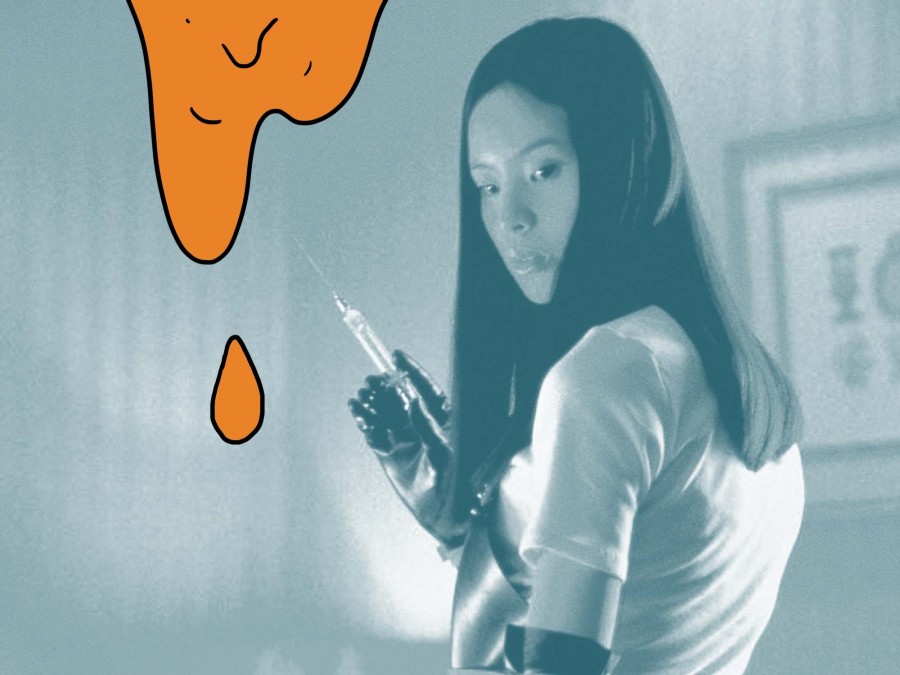
Takashi Miike has invariably come to define Japan’s genre cinema in the contemporary age. Often making three or four films a year, Miike is ruthlessly prolific but still maintains a higher than average hit ratio. Back in 1999, he released one of the films that introduced him to an international audience: Audition. About a widower who struggles to meet women and decides to host auditions to find a girlfriend, the tables turn on him when the woman of his dreams, Asami, turns out to be a creature of nightmares. What begins as a slow burn drama about deception quickly turns to all-out horror, as perceptions are not what they seem as surface manners conceal ulterior motives. Toying with the image of the ideal Japanese woman, the film subverts expectations and tackles the objectification of women through a dark plot of violence and revenge.
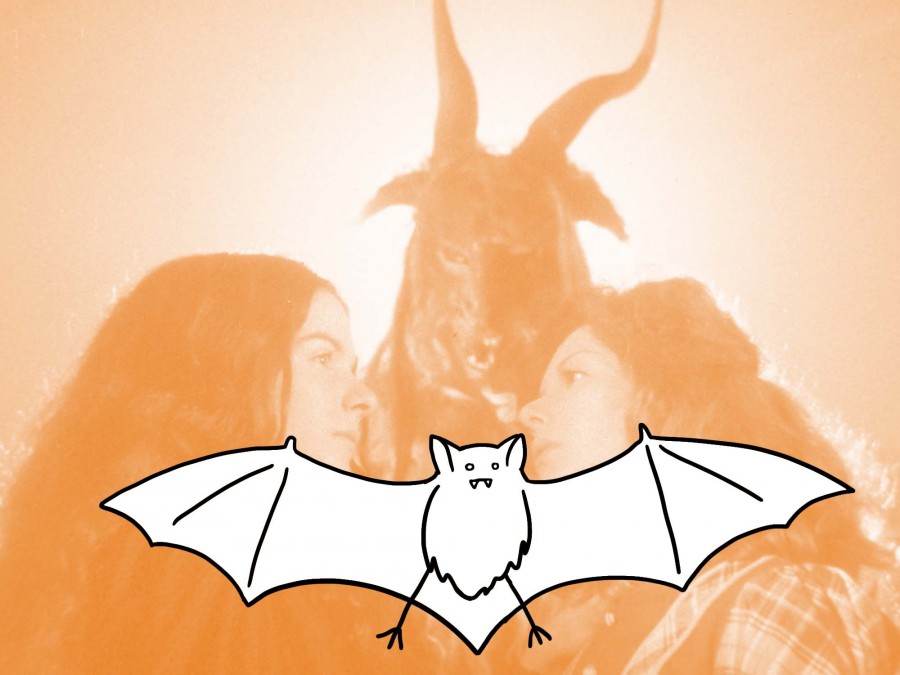
Obsessive female friendship is pathologised in Alucarda, a reinvention of the Marquis de Sade’s sister novels Justine and Juliette, set within a Mexican convent. The innocent Justine encounters the troubled Alucarda (Dracula spelled backward) and the pair becomes very close. Wandering the countryside, Justine and Alucarda accidentally unleash a demonic force into the convent, what follows is a horrific interpretation of the meeting of superstition and religion. Some of the most unsettling images in all of horror emerge from Alucarda, not the least, the bizarre rituals of this specific religious order where under their habits the sisters wear yellowed and bloodied rags. In the film’s final chapter, these nuns act as mummy like spectres who wander through the literal cave-like halls of their convent as fire rages around them. Larger than life in many ways, Alucarda showcases the kind of female relationships that make people uncomfortable and the environments that breed obsessive and insular friendships.
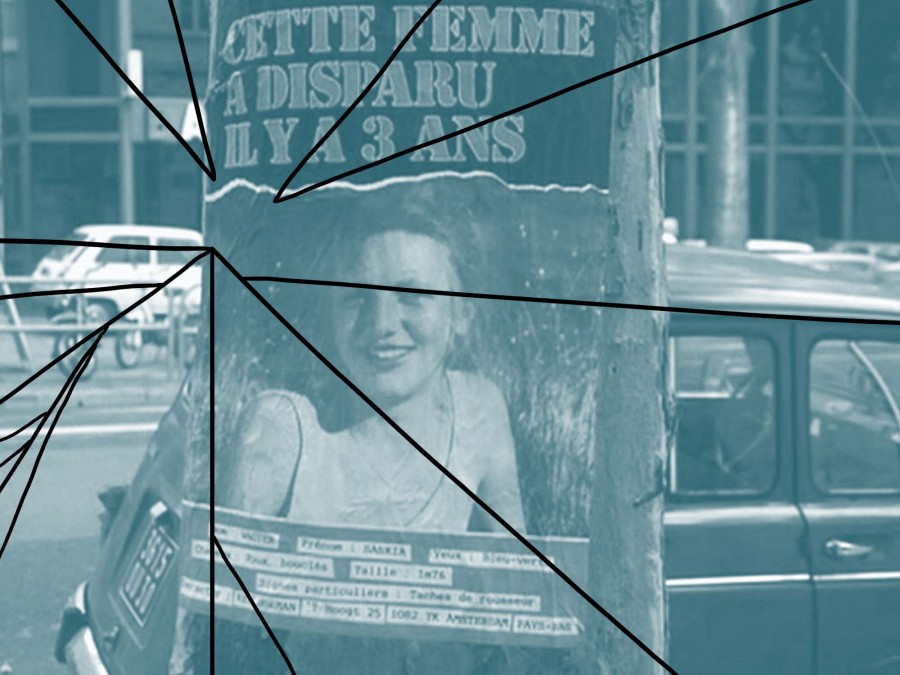
Far from a traditional horror film, the villainous killer of Spoorloos has games on his mind as he sets his mark on a young woman. While most of the film follows the young woman’s boyfriend as he tries to find the truth behind her disappearance, Spoorloos never conceals the identity of the offender. This film is not a slasher or even a mystery, but rather a philosophical undertaking of the mind of a kidnapper. The Vanishing unveils nearly everything to the audience, except the exact nature of the titular vanishing. Building suspense in a non-traditional way, the audience is handed all the evidence at face value and is challenged to interpret it while following along with the narrative. Cerebral rather than visceral, the film creeps under your skin and offers a unique and as of yet, unreplicated, cinematic experience in dread.
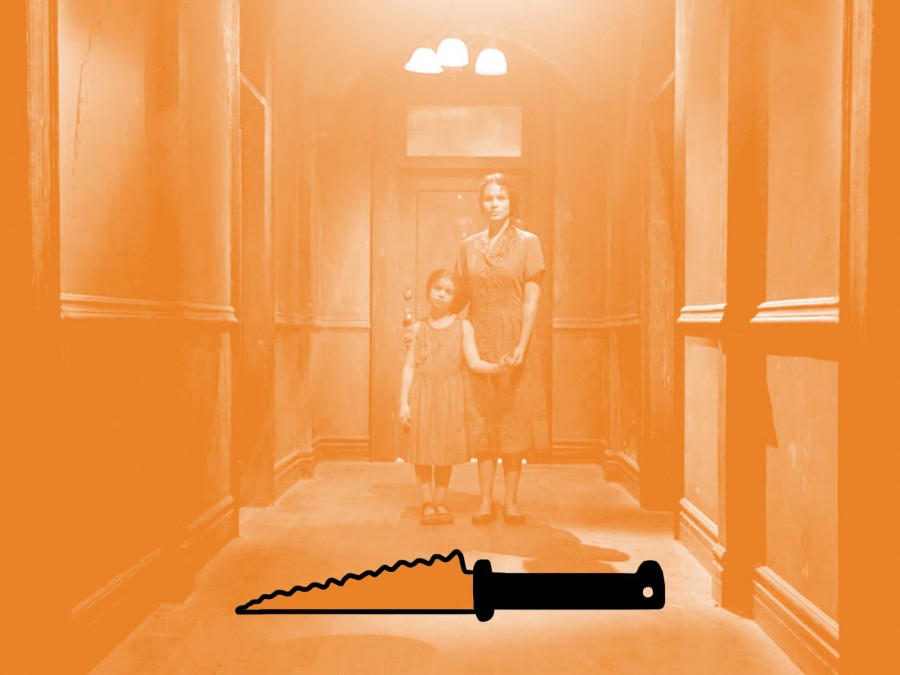
Filipino horror The Echo is cast in petulant shades of green and yellow. Marvin has just moved into his new apartment and quickly notices that his neighbour, a police officer, repeatedly abuses his wife and child. Afraid of authority and torn as to what to do, he volunteers to help the poor young mother by sheltering her daughter from her father’s violent outbursts. With horror drawn from the internal conflict of wanting to do what’s right and fearing the consequences of an unchecked violent authority, The Echo explores personal responsibility and consequences of standing up to the police and how violence has a way of echoing through time and space. Within the concrete and mostly windowless apartment complex, pain stemming from one particularly brutal act of violence spreads like a phantom through the film’s environment, eventually bleeding out into the greater world.

Inspired by the true events of a convent in Lourdes, France, Mother Joan of the Angels is one of the greatest Polish films. The film depicts life in a convent where the nuns, under the guidance of Mother Joan, have all gone mad. Sent to investigate the incident of mass hysteria, the Father Józef Suryn witnesses the perversions of religious worship and rituals within the convent walls. Far from a traditional horror film, Mother Joan of the Angels builds an atmosphere of oppression with stark contrasting blacks and whites and rigorous formal compositions that emphasises the twisted bodies and malformed expressions of the apparently possessed nuns in contrast with the stiff convent walls. Rather than depict demonic possession with the dramatics of say, the subtlety of Mother Joan’s villainy blurs the line between conscious rebellion and the suggested evil that has apparently crept into her soul and spread to her flock.
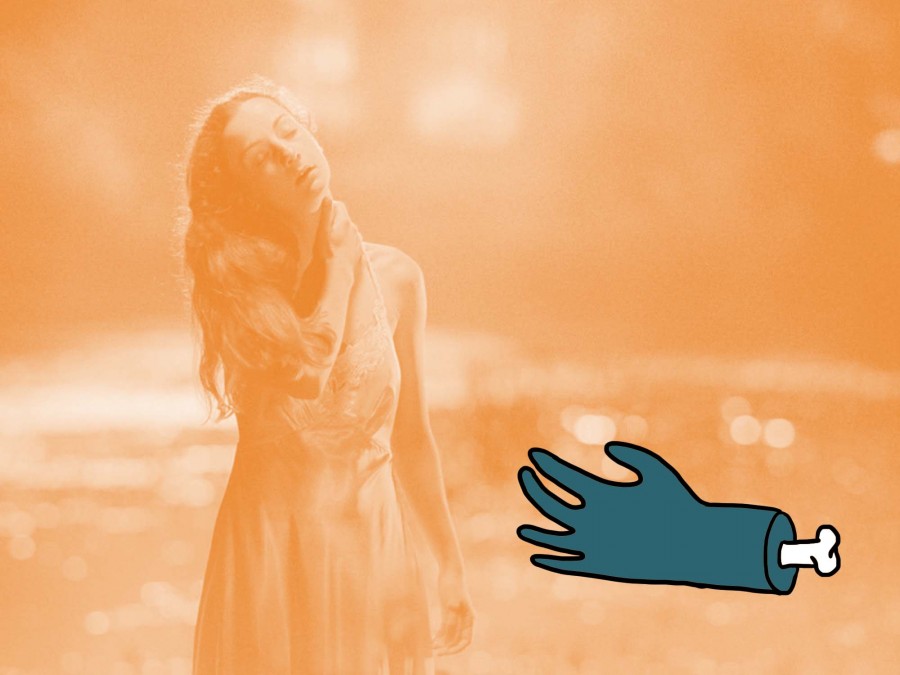
A gothic horror that does little to dispel associations with Dracula, this film is inspired by a 1936 novella about a legendary undead woman and the relationship she forges with a young man, Egor, visiting the house she haunts. Relegated mostly to the sumptuous mansion, the film takes place deep within Egor’s mind. He controls the action as the film maintains his point of view, and his voice over draws us into his thoughts and fears. With a dreamy atmosphere, the film blurs the line between the conscious and subconscious mind as Egor gets pulled deeper into a romance with the undead. As the film goes on he becomes more disconnected with the world of the living, losing himself to the past. Short on jump scares, the film tackles the fragility of our own reality especially in the face of tremendous loneliness.
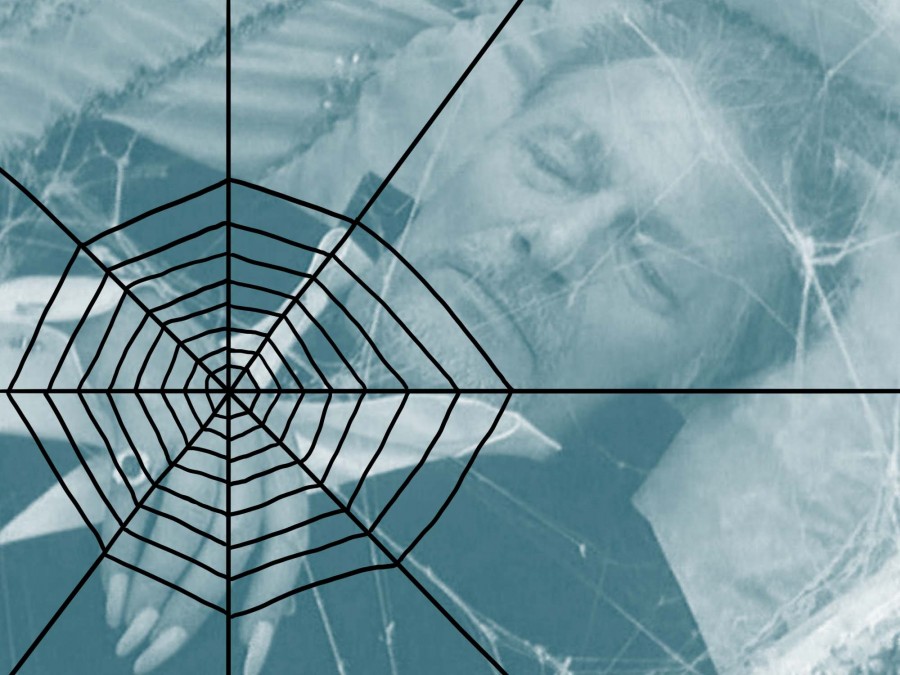
Inspired by a classic Russian folktale, Viy was given liberties in its religious depictions by the otherwise strict USSR. With a hazy blue colour and visual effects reminiscent of the silent works of FW Murnau, Viy evokes a frightening fairy tale intended for older children. Set in the Ukrainian countryside, beautiful Orthodox churches and centuries-old towns set the scene for a beautiful challenge of faith as a priest presides over the three-night wake of a beautiful young woman. Every night, however, she rises from her deathly slumber to challenge him, while he battles the forces of evil with just some salt, his bible and his belief in God. Evoking a perverted pastoral poetry, the film’s natural environments are cast in a hazy blue light and evoke otherworldliness that contributes to the film’s fairy tale quality. The film’s final act unexpectedly showcases an extravagant horror set piece with otherworldly demons descending upon the small farm house.
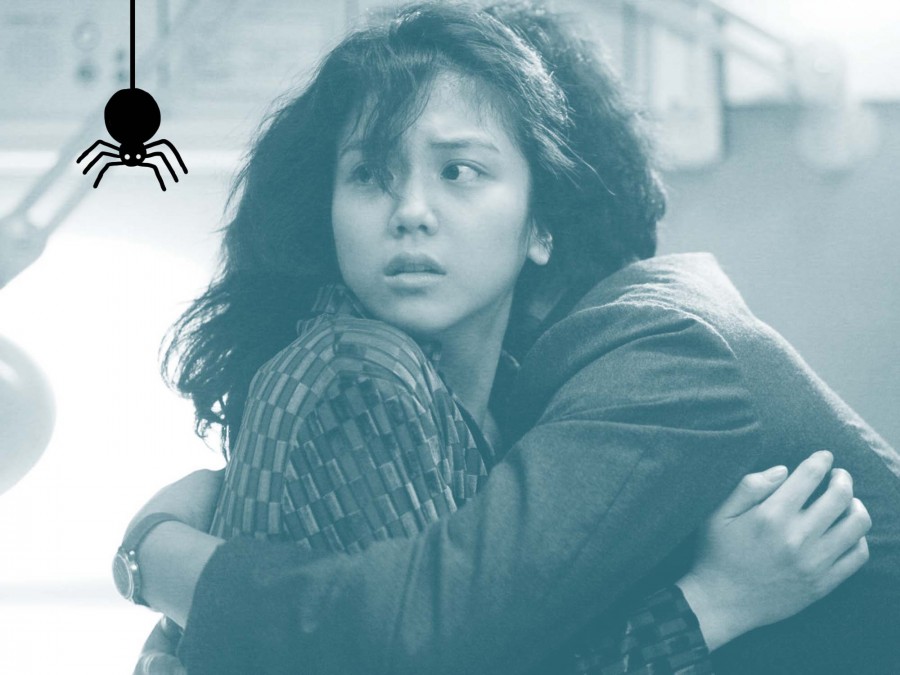
Shockingly sensual and with a vampiric twist, Park Chan-wook’s Thirst is inspired by Emile Zola’s novel of forbidden love, Therese Raquin. As much a horror film as it is the story of an illicit sexual affair, the film presents vampirism as a medical experiment gone wrong rather than some ancient evil. This shifts the moral question away from temptation and updates it for a contemporary age as it challenges humanity to stand up for their own actions rather than shift the blame on some outside force. Deeply entrenched in irony, Park Chan-wook challenges preconceptions about the genre and portrays a thoroughly modern vampire story. Among other things, Thirst explores the human cost of living forever and the self-destructive capacity for obsessive carnal attraction. Park Chan-wook has long become the rare filmmaker to appeal to both gorehounds and Cannes and Thirst may very well be his masterpiece.
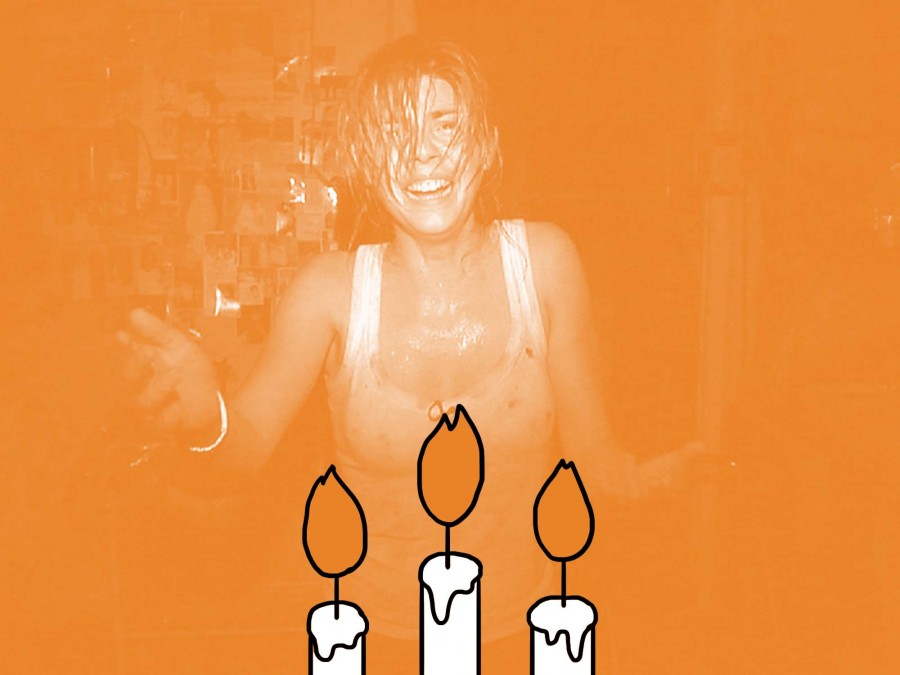
One of the shining lights of the found footage film, [Rec] abandons many of the genre’s conceits by angling the presence of a camera through a television crew working on a feel-good segment about firefighters at work. As they arrive on the scene of emergency in an apartment complex, without much notice they are all put under quarantine lockdown as a strange illness has spread through the residents. Blending first-person scares with the obsessive fears of Catholic guilt, the film showcases the birth of an epidemic in real time, working towards a rapturously horrific set piece built around the meeting of religion and science in the form of an emaciated victim of demonic possession.
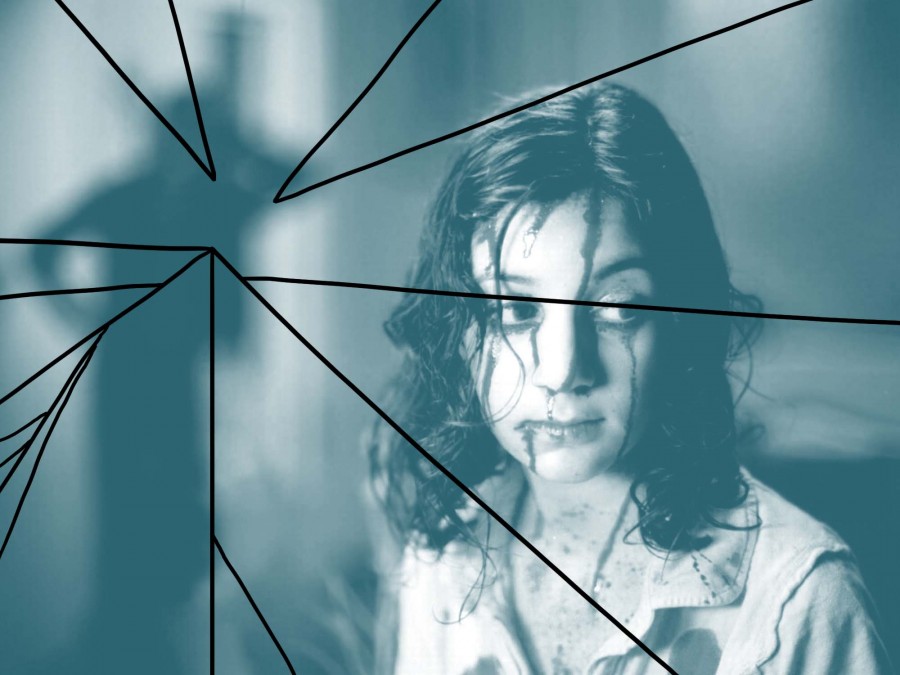
The sound of snow falling, like creeping insects, sets the tone for Sweden’s Let the Right One In. As a bullied boy befriends a young girl who hangs around the playground at night, he finds in this aloof playmate his first and only friend. She lives with a father figure who acts more like a spurned lover than a guardian and strange happenings start appearing about town. Longing and loneliness meet as the pair become closer and their bond over their shared ostracisation and capturing deftly the alienation that comes with long winter nights, director Tomas Alfredson twists the perceived safety of a Swedish suburb for horrific effect. The promise of comfort offered by these neighbourhoods only provides the illusion of a perfect suburban life, which only targets it’s more weakened elements. A disturbing take on the cycle of violence which presents no alternative and no real end to it, creates a creeping sense of dread that follows you well after the credits roll.
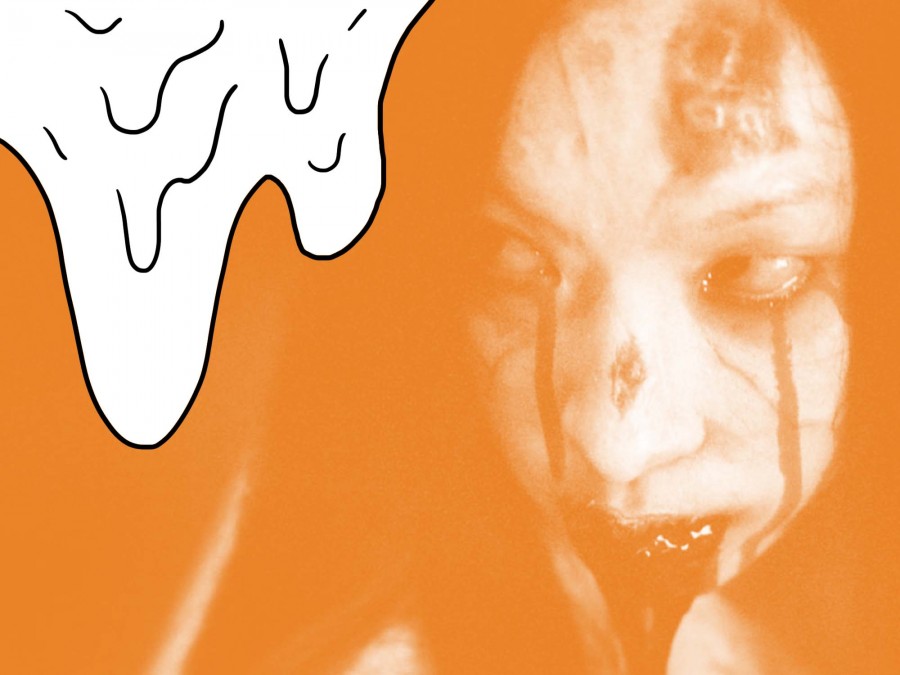
A dark secret looms over Shutter, a Thai horror about a photographer who starts to see bizarre and nightmarish apparitions in his photos. Playing on technophobic fears of the dangers of technology as connected with older superstitions about sudden or unresolved death, Shutter carries over old fears into a new age. Central to the film’s haunting is the echoes of a suicide and secrecy as the failure to address the past and trauma of those around you has a way of weighing you down (often quite literally). Cast in cool tones, the film has the atmosphere of a morgue except the red glow of the darkroom which punctuates some of the film’s most important revelations and is the source of so much dread. Strangely prescient in regard to the pervasiveness of technology in our lives, Shutter angles to put a supernatural edge on mechanical advancements.
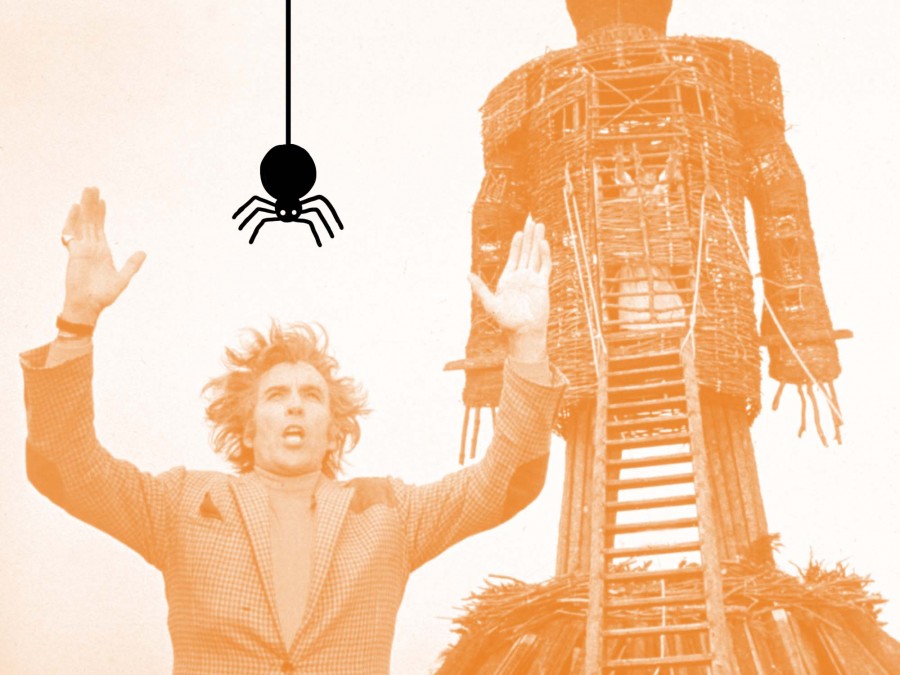
Robin Hardy’s The Wicker Man, may very well be a sole figure in the pagan-musical horror genre. Wrapped up in the mystery of a missing girl, Sergeant Howie arrives on the remote Summerisle where the residents have abandoned Christianity in favour of Celtic paganism. Rapturously sensual, the uptight Howie struggles spiritually as his hardline Christianity comes up against the seemingly liberated sexuality of the island. A spiritual mystery as much about religious oppression as it is about a missing girl, the film explores the nature of religious belief from the outside while revealing Howie’s own hypocrisy in his own belief systems. With a kind of rhythmic energy, the film has a unique and disjointed cadence that inspires a troubling unease, especially as matched with the overcast but nonetheless visually sunny environments. Facing forgotten Celtic rituals revived during the hippie movement with the uptight Protestantism that came to dominate the UK over the centuries, the film marries two disparate ideologies that threaten reason and justice within contemporary society.
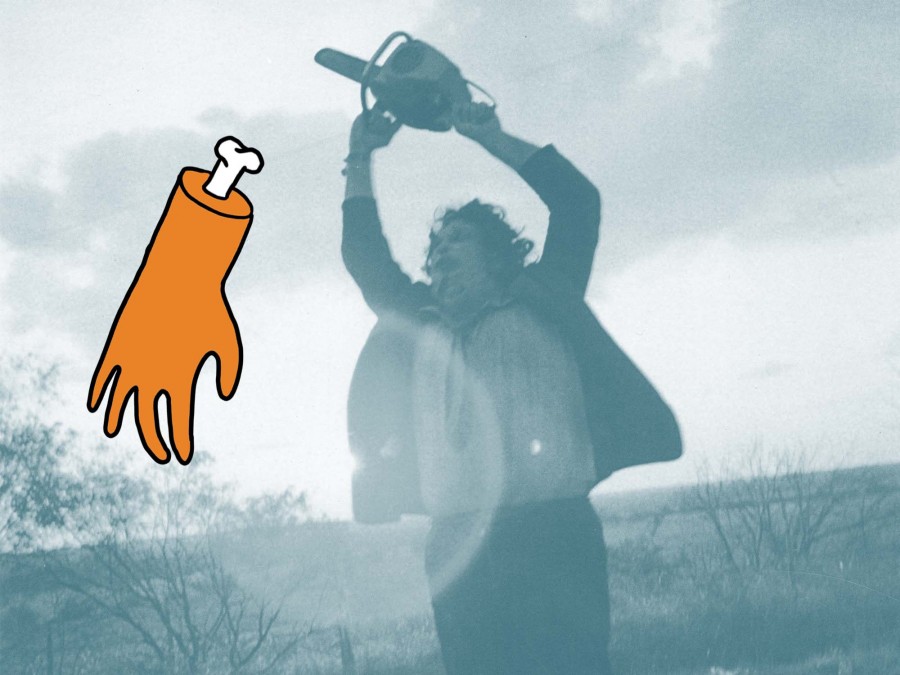
A re-imagining of horror itself, The Texas Chainsaw Massacre draws on the hopelessness of an impoverished countryside as slaughterhouses and drought exemplify the scorched Texas landscape as imagined by Tobe Hooper. Reflecting in the senseless of the growing dread of a seemingly endless war and the death of 1960s idealism, The Texas Chainsaw Massacre ushered in a new age of American fears where heroes are neither brave or particularly clever, only lucky. The American cinema is one of intense contradictions, represented too often by the machine of Hollywood, the films emerging from the dream factory have never been able to reflect the totality of the American experience – least of all, within the horror genre. Low budgeted and dirty, The Texas Chainsaw Massacre represents at once the stretching infinity of the land and the stunning resourcefulness of its greatest artists.
Published 31 Oct 2016
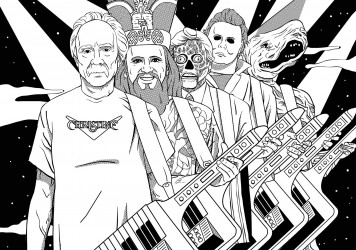
The cult director talks remakes, his love of early synthesisers and why nostalgia works in mysterious ways.
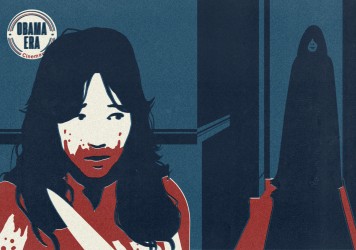
Justine Smith examines how movies like The House of the Devil and Lords of Salem use nostalgia to expose a fractured national identity.
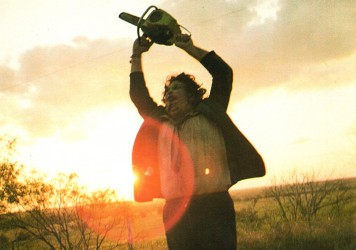
It may not be the most iconic piece of film music, but Tobe Hooper’s organic, visceral soundtrack is uniquely unsettling.